15 Rare Birds That Define the Beauty and Mystery of Nature
Updated: 25 Feb 2024
41

Birds have always captivated our imagination with their beauty, grace, and diversity. While many bird species are common and widely known, some are incredibly rare and elusive. Sadly, they’re also at great risk due to human actions like deforestation, which have put many birds in danger. According to EDGE, one out of every eight species is now facing extinction.
Around the world, conservation and breeding programs are working tirelessly to save these rare birds and increase their numbers for release back into the wild.
Here’s a list of 15 unique birds that are both rare and fascinating in how they look and behave.
1. Blue-eyed Ground-Dove (Columbina cyanopis)
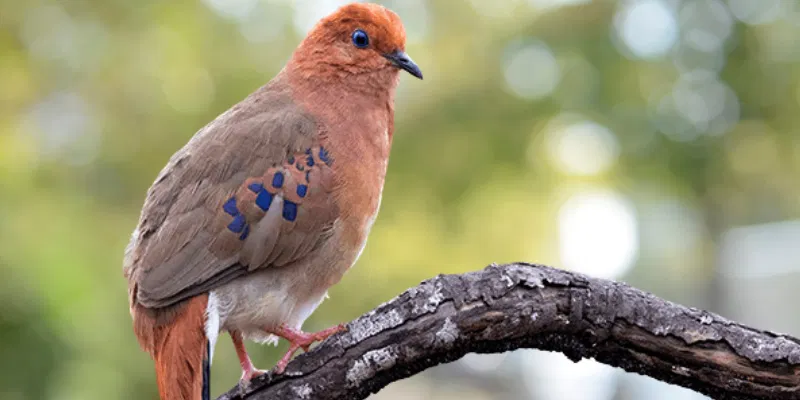
These delightful birds are the rarest and most endangered doves globally, residing in the Cerrado region of Brazil. Thought to be extinct for 75 years, their rediscovery in 2015 brought hope when 12 individuals of this species were joyfully found!
Ornithologist Rafael Bessa stumbled upon a mysterious bird call, capturing it on record. Upon playback, he was astonished to realize that it belonged to the Blue-eyed Ground-Dove. Contrary to belief, they had not vanished from the Earth.
Named for their shimmering blue eyes, which mirror the spots on their wings, the azure hue presents a striking contrast against their predominantly mud-brownish-red plumage.
2. Kakapo (Strigops habroptilus)
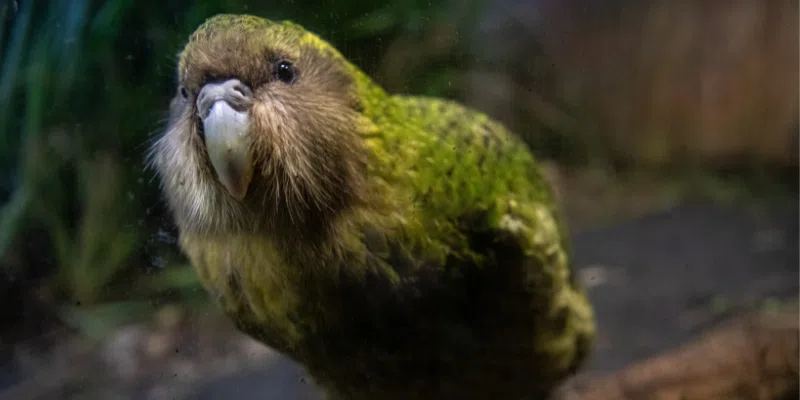
The kakapo is a nocturnal, flightless parrot native to New Zealand with no close relatives whatsoever. This peculiar yet endearing bird is critically endangered.
Kakapos are solitary creatures, rarely venturing from their territory, which they maintain for most of their lives. They sustain themselves by nibbling on seeds, plants, and various fruits found on the ground, though they are also capable climbers. They have a peculiar habit of leaping from trees and flapping their flightless wings, resulting in a somewhat comical yet controlled descent.
Before human arrival in New Zealand, kakapos were abundant throughout the forests. However, with the introduction of humans and other predatory mammals, their numbers plummeted drastically. By the 1990s, only 50 individuals remained, and now none can be found in the wild. Conservation efforts are concentrated in parks, where significant efforts are being made to increase their numbers once more.
3. Rufous-headed Hornbill (Rhabdotorrhinus waldeni)
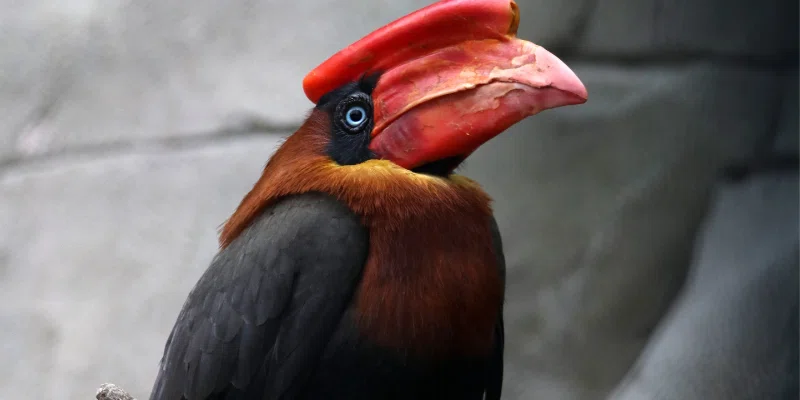
Native to the Philippines, the Rufous-headed Hornbill stands as one of the most endangered of its species. It features a bony ‘casque’ protruding from the top of its wrinkly red-orange bill. Despite appearing sturdy, the bill is structurally thin, with hollow bone cells.
Rufous-headed Hornbills employ a unique method to protect their offspring. Both parents utilize saliva and mud to construct a barrier across the entrance to a tree cavity, effectively sealing the female and eggs inside. They leave a small opening at the top, allowing the male to pass food. Moreover, these parents fiercely defend their nest territory.
Unfortunately, severe deforestation, hunting, and nest poaching have led to the extinction of Rufous-headed Hornbills on some Philippine Islands. Nonetheless, a significant conservation effort is underway, primarily focused on nest protection. Encouragingly, their population appears to be rebounding.
4. Cebu Flowerpecker (Dicaeum quadricolor)
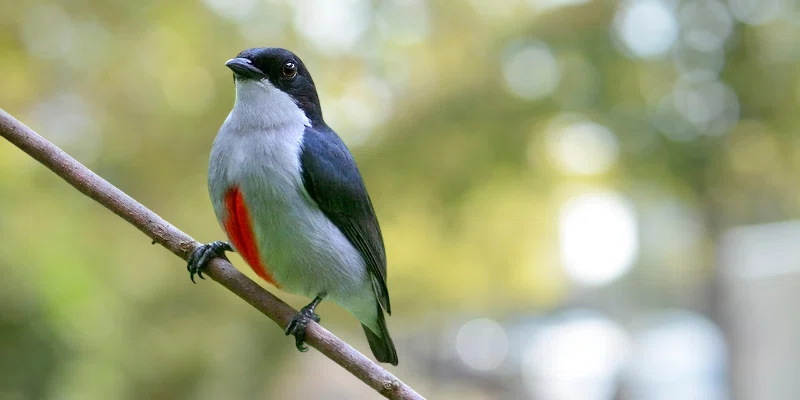
Exclusive to the Cebu Islands in the Philippines, these birds were believed to be extinct due to the loss of their habitat. However, in 1992, they resurfaced in a small limestone forest within the Central Cebu Protected Landscape.
Named Quadricolor, after the four colors present in the male’s plumage—blue, red, white, and yellow—Cebu Flowerpeckers are frugivorous, feeding solely on fruit and seeds.
With only 105 individuals remaining worldwide, extensive efforts are underway to conserve them.
5. New Caledonian Owlet-Nightjar (Aegotheles savesi)
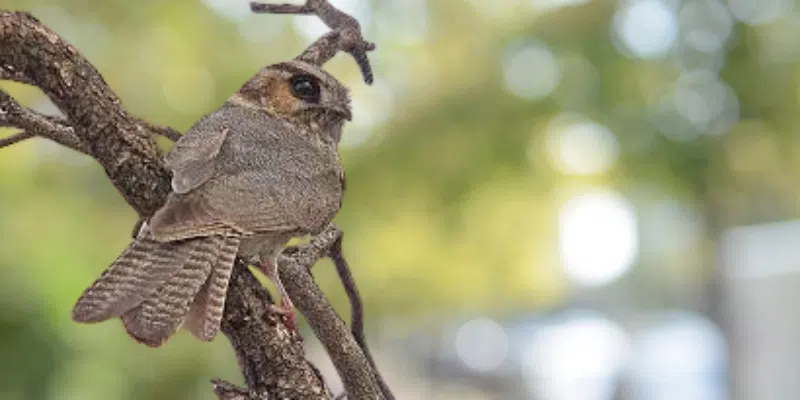
Also known as the “Enigmatic Owlet-Nightjar,” this bird is one of the most mysterious on the list. It’s bigger than the Australian Owlet-Nightjar and was only smaller than the now-extinct New Zealand Owlet-Nightjar.
In 1880, only two New Caledonian Owlet-Nightjars were found. One flew into a bedroom in Tonghoué, a small village in New Caledonia. After 1915, sightings became rare, and researchers think their numbers haven’t grown.
The New Caledonian Owlet-Nightjar is black with grey stripes, a long, rounded tail, short, rounded wings, and long, stout legs, showing it’s a ground feeder. Its voice is unknown, but it likely makes whistles and trilling sounds like other Owlet-Nightjars.
With fewer than 50 left, there are no conservation efforts to save this bird.
6. Imperial Amazon (Amazona imperialis)
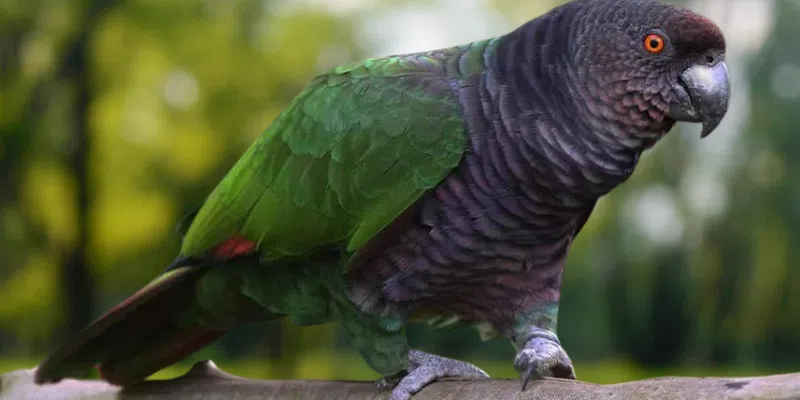
The Dominican Republic’s Imperial Amazon, known locally as the sisserou, is the island’s national bird and is found nowhere else in the world.
Sadly, this species is critically endangered, with only about 50 mature individuals remaining in the wild as of 2019, down from hundreds in previous years. The plight of the sisserou stems from two main factors: the significant loss of its natural habitat and the devastating impact of Hurricane Maria.
Imperial Amazons are relatively large for parrots, measuring around 19 inches in length and weighing about 23 ounces for females and 32 ounces for males. They are typically shy birds, often seen traveling in small groups of three at most. Occasionally, they may flock together with red-necked Amazons. They are adept climbers and strong flyers, preferring to perch at the tops of trees. Their plumage provides excellent camouflage, making them challenging to spot in their natural habitat.
7. Spix’s Macaw (Cyanopsitta spixii)
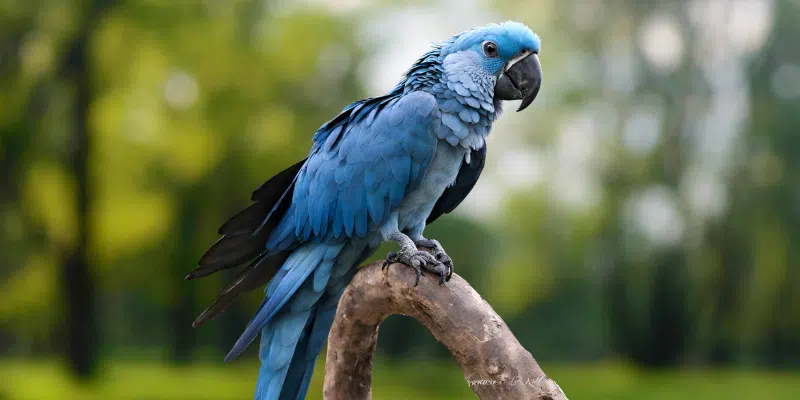
Also known as the little blue macaw, the Spix’s macaw is a species endemic to Brazil. Discovered in 1819, it was already rare due to a century of habitat destruction in the Caatinga, a unique shrubland and thorn forest in northeastern Brazil.
However, its decline accelerated in the 1970s due to hunting, deforestation, and the construction of the Sobradinho Dam. In 2019, it was declared extinct in the wild.
Despite a small captive population, breeding attempts have faced challenges like inbreeding, resulting in infertility and high embryo mortality rates. However, recent advancements in artificial insemination have brought hope. A reintroduction program has successfully seen three Spix’s macaws born in the wild in Bahia, Brazil.
8. Madagascar Pochard (Aythya innotata)
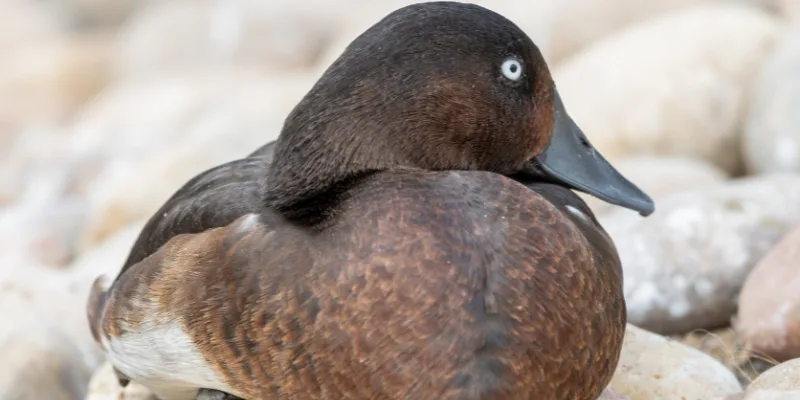
The Madagascar pochard, a critically endangered diving duck, exclusively inhabits inland wetlands in Madagascar, favoring shallow marshes and lakes with dense vegetation. In the 1940s and 1950s, its population faced a significant decline due to deforestation, pollution, and the introduction of fish species that harmed pochard chicks and nesting sites.
By the 1990s, it was presumed extinct until November 2006, when nine adults and four ducklings were found on Lake Matsaborimena, also known as Red Lake, in a remote area of Madagascar.
However, the lake’s conditions were unsuitable for their survival. To aid their recovery, the Wildfowl and Wetlands Trust, in partnership with the Durrell Wildlife Conservation Trust, removed a clutch of eggs and incubated them in captivity. Successful breeding efforts ensued, leading to more hatchings.
In 2018, 21 Madagascar pochards were reintroduced to Lake Sofia, an isolated freshwater lake located in the northern region of the island. Encouragingly, in 2020, they successfully bred in the wild, marking a significant milestone in their conservation journey.
9. New Zealand Rock Wren (Xenicus gilviventris)
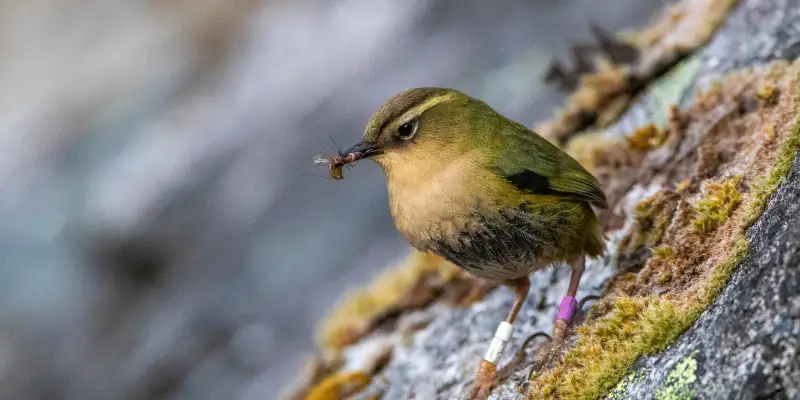
As its name suggests, the New Zealand rock wren is native to the South Island of New Zealand. In Māori, it’s called pīwauwau, meaning “little complaining bird,” and mātuitui, which refers to its twitching or bobbing motion.
These birds are not strong flyers, barely managing to reach heights of 7 feet or distances of over 100 feet. They move by hopping and running, bobbing their heads, and uniquely flicking their wings. With long, stout legs, they excel at climbing rocks and can survive in high altitudes, enduring year-round snow at elevations up to 1000 feet.
Rock wrens primarily feed on ground-dwelling invertebrates, along with berries, seeds, and nectar from flax flowers.
Unfortunately, the New Zealand rock wren population declined significantly, almost by 50% between 1985 and 2005. To conserve the remaining birds, they were relocated to the southern tip of the South Island, where they are closely monitored and protected from their main predators, including stoats and rats.
10. Stresemann’s Bristlefront (Merulaxis stresemanni)
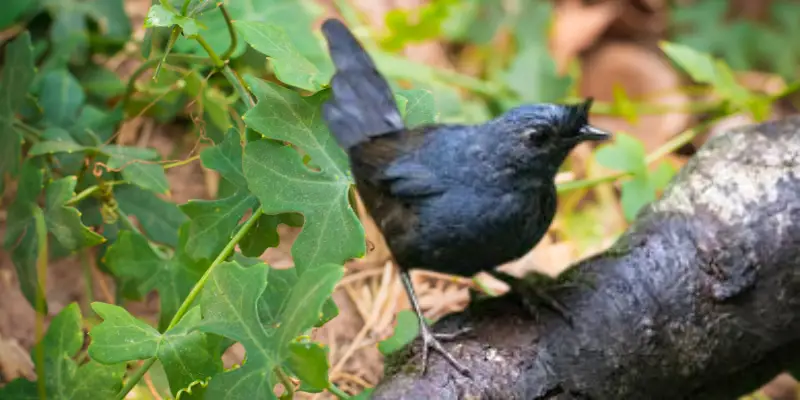
Stresemann’s Bristlefront stands as one of the rarest birds on the planet, with only one known individual remaining.
In December 2018, hope flickered when a single Bristlefront was sighted in Brazil. However, the species faces daunting odds due to the severe loss of its habitat in the Atlantic forests of the Americas. Sadly, the chances of its survival are slim, with the Atlantic Forest dwindling to less than 8 percent of its original size, leading to the extinction of numerous species.
This unique bird, belonging to the Rhinocryptidae family, is known for its long tail and burrow-nesting habits. Its name derives from the distinctive feathers on its head. Measuring almost 8 inches long, the male is charcoal gray, while the female boasts a reddish cinnamon brown plumage.
11. South Philippine Dwarf Kingfisher (Ceyx melanurus)
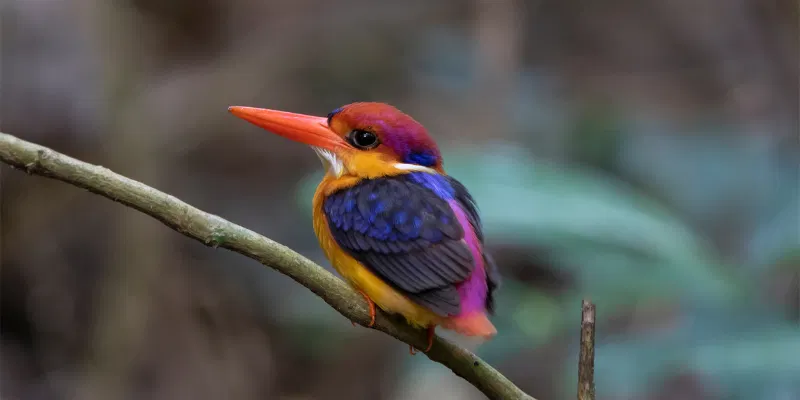
For the first time in 130 years, the elusive South Philippine Dwarf Kingfisher has been sighted, photographed, and revealed to the world!
This charming little bird, known for its unpredictable flight patterns, had managed to elude detection since 1890. Adorned with a stunningly colorful plumage featuring metallic lilac, orange, and bright blue spots, it breeds and roosts in tropical or subtropical habitats such as moist lowland forests.
Unfortunately, habitat loss is causing a decline in their numbers. Scientist Miguel David De Leon and his team have devoted their careers to studying, documenting, and conserving this beloved bird. Their efforts are vital for the survival of this endangered species.
12. Honduran Emerald (Amazilia luciae)

Classified as vulnerable, the Honduran Emerald is a hummingbird species unique to Honduras, primarily found in three fragmented areas across the departments of Santa Bárbara, Cortés, Yoro, and Olancho. Its estimated population ranges between 10,000 and 20,000 individuals.
The species faces significant threats, with up to 90 percent of its habitat lost to agriculture, human settlement, and degradation caused by cattle grazing. These factors have led to a severe decline in the Honduran Emerald population.
In 2005, the American Bird Conservancy supported the establishment of the Honduran Emerald Reserve in the Aguan Valley, encompassing 650 hectares of tropical dry forest habitat.
Despite the International Union for Conservation of Nature’s (IUCN) revision of its assessment of the bird’s threat status due to an improved understanding of its distribution, populations are still believed to be declining. Immediate conservation efforts are imperative to safeguard the survival of this species.
13. Golden Pheasant (Chrysolophus pictus)
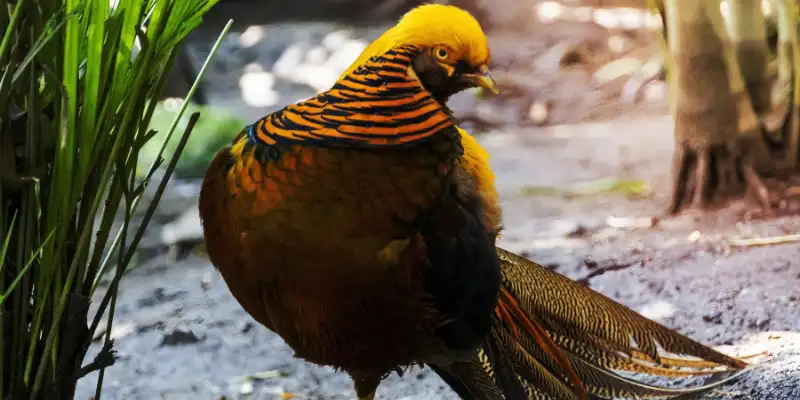
The Golden Pheasant (Chrysolophus pictus) is a stunning bird native to the lush forests of Western China. Despite their popularity in zoos, many of the golden pheasants seen there are hybrids. True golden pheasants have striking golden crests and vibrant plumage, particularly in males.
These birds can reach impressive lengths of up to 41 inches, with their extravagant tails comprising two-thirds of their total body length. While they captivate with their beauty, golden pheasants are notoriously elusive in the wild. Consequently, there remains much to be discovered about their natural behaviors and habitat preferences.
The population of golden pheasants is alarmingly low, with only an estimated 1000 to 2000 individuals remaining in the wild. This scarcity underscores the importance of conservation efforts to preserve these magnificent creatures for future generations to admire and appreciate.
14. Antioquia Brush Finch (Atlapetes blancae)
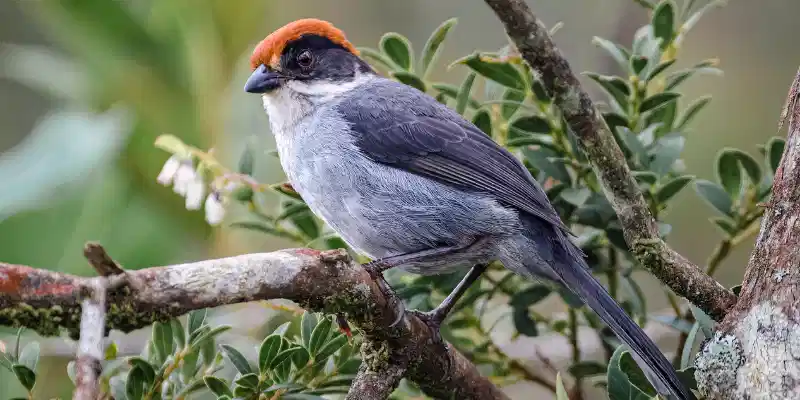
Very little was known about the Antioquia Brush Finch until recently. In 2007, scientists realized that three birds previously thought to be another species were a new one. They named it after its pale underparts and Bianca Huertas, a lepidopterologist and wife of an ornithologist who helped describe it.
It was believed to be extinct until 2018, when someone spotted one near San Pedro de los Milagros. Since then, fewer than 100 have been seen. Their habitat is shrinking, but efforts are underway to find and protect the areas where they live.
15. Vogelkop Superb Bird-of-Paradise (Lophorina niedda)
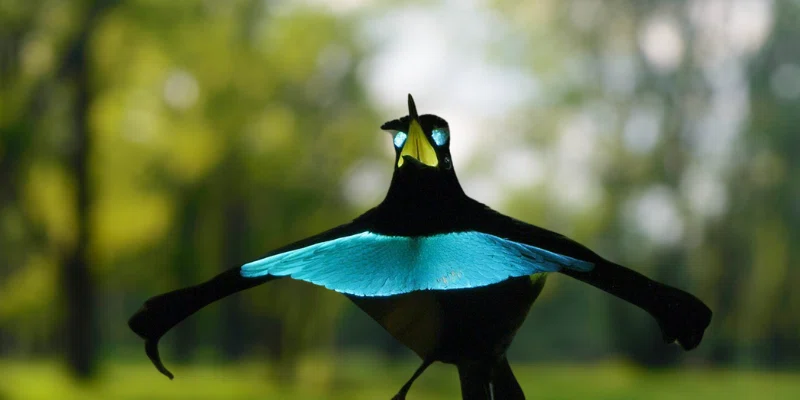
For years, the Vogelkop Superb Bird-of-Paradise was mistaken for its closely related, more widespread cousin, the Superb Bird-of-Paradise.
However, recent studies have revealed significant differences between the two birds, including distinct mating dances, female characteristics, and chirping patterns. As a result, ornithologists have classified the Vogelkop Superb Bird-of-Paradise as its own species.
Both birds are native to New Guinea, but the Vogelkop Superb Bird-of-Paradise is exclusively found on the Bird’s Head (Vogelkop) island in the far west.
The courtship display of this bird is truly mesmerizing! The male performs an intricate dance, spreading out his black cape like a movie screen, showcasing vivid blue breastplates and striking blue eyes against a backdrop of darkness. He moves around the female in a semi-circle, captivating her until she finally succumbs to his charms. Watching this dance is an unforgettable experience!
Final Thought:
In conclusion, the world is home to a remarkable array of bird species, each with its own unique characteristics and behaviors. Yet, among them, there exists a select group of birds that stand out not only for their rarity but also for the captivating stories of their survival struggles.
From the resilient Kakapo of New Zealand to the enigmatic Stresemann’s Bristlefront of Brazil, these birds face daunting challenges ranging from habitat loss to hunting and predation. However, their stories also inspire hope, as dedicated conservationists work tirelessly to protect and restore their populations.
As we marvel at the beauty and diversity of these 15 rare birds, let us also recognize the importance of conservation efforts in safeguarding their future. By raising awareness, supporting habitat preservation, and actively participating in conservation initiatives, we can all play a role in ensuring that these extraordinary creatures continue to grace our skies for generations to come.
What is the most rare bird?
The Madagascan Pochard holds the title of the rarest bird on Earth. With only 25 individuals remaining in the wild and 55 in captivity, its population is critically low. Additionally, the species faces a high risk of extinction due to the lack of suitable habitat remaining for its survival.
What are the first rarest birds?
- Golden Pheasant
- Cebu Flowerpecker
- Sisserou or Imperial Amazon
- Blue-eyed Ground Dove
- Kakapo
- Stresemann’s Bristlefron
- South Philippine Dwarf Kingfisher
Is a blue bird rare?
Bluebirds, while once considered fairly common, have seen substantial population declines over the last century due to factors like habitat loss, pesticides, invasive species, and climate change. Conservation efforts aim to stabilize and recover their numbers.
What is a rare and beautiful bird?
The golden pheasant, native to western China, is admired for its stunning beauty. Feral populations exist worldwide. The male, measuring 35 to 41 inches long, boasts a strikingly mottled tail.
What is the 140 year old bird?
The black-naped pheasant-pigeon, believed to have been extinct for 140 years, was rediscovered in the forests of Papua New Guinea. Scientists documented it for the first time in 1882 and recently found it again with support from the nonprofit Re:wild.
Please Write Your Comments